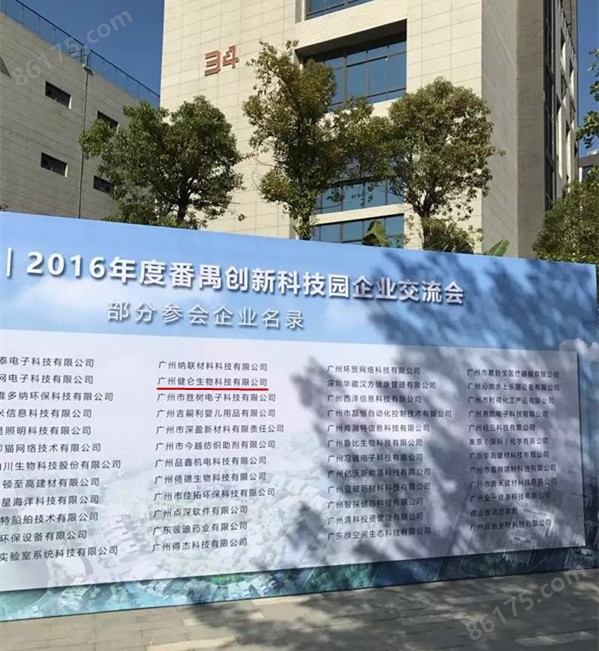其他品牌 品牌
代理商厂商性质
广州市所在地
人感染贾第虫病毒诊断试剂盒(酶联免疫法)
广州健仑生物科技有限公司
Cellabs公司是一个的生物技术公司,总部位于澳大利亚悉尼。专门研发与生产针对热带传染性疾病的免疫诊断试剂盒。其产品40多个国家和地区。1998年,Cellabs收购TropBio公司,进一步巩固其在研制热带传染病、寄生虫诊断试剂方面的位置。
人感染贾第虫病毒诊断试剂盒(酶联免疫法)
该公司的Crypto/Giardia Cel IFA是国标*推荐的两虫检测IFA染色试剂、Crypto Cel Antibody Reagent是UK DWI水质安全评估检测的*抗体。
【Cellabs公司中国总代理】
Cellabs公司中国代理商广州健仑生物科技有限公司自2014年就开始与Cellabs公司携手达成战略合作伙伴,热烈庆祝广州健仑生物科技有限公司成为Cellabs公司中国总代理商。
我司为悉尼Cellabs公司在华代理商,负责Cellabs产品在中国的销售及售后服务工作,详情可以我司公司人员。
主要产品包括:隐孢子虫诊断试剂,贾第虫诊断试剂,疟疾诊断试剂,衣原体检测试剂,丝虫诊断试剂,锥虫诊断试剂等。
广州健仑生物科技有限公司与cellabs达成代理协议,欢迎广大用户咨询订购。
我司还提供其它进口或国产试剂盒:登革热、疟疾、流感、A链球菌、合胞病毒、腮病毒、乙脑、寨卡、黄热病、基孔肯雅热、克锥虫病、违禁品滥用、肺炎球菌、军团菌、化妆品检测、食品安全检测等试剂盒以及日本生研细菌分型诊断血清、德国SiFin诊断血清、丹麦SSI诊断血清等产品。
欢迎咨询
欢迎咨询2042552662
【Cellabs公司产品介绍】
公司的主要产品有:隐孢子虫诊断试剂,贾第虫诊断试剂,疟疾诊断试剂,衣原体检测试剂,丝虫诊断试剂,锥虫诊断试剂等。Cellabs 的疟疾ELISA试剂盒成为临床上的一个重要的诊断工具盒科研上的重要鉴定工具。其疟疾抗原HRP-2 ELISA检测试剂盒和疟疾抗体ELISA检测试剂盒已经成为医学研究所的*试剂盒。Cellabs产品主要包括以下几种方法学:直接(DFA)和间接(IFA)免疫荧光法,酶联免疫吸附试验(ELISA),和胶体金快速测试。所有产品都是按照GMP、CE标志按照ISO13485。
二维码扫一扫
【公司名称】 广州健仑生物科技有限公司
【】 杨永汉
【】
【腾讯 】 2042552662
【公司地址】 广州清华科技园创新基地番禺石楼镇创启路63号二期2幢101-3室
【企业文化】



能产生微量或不产生硫化氢,甲基红和vp试验阴性,枸椽酸盐培养基中不生长。空肠弯曲菌抵抗力不强,易被干燥、直射日光及弱消毒剂所杀灭,56℃5分钟可被杀死。对红霉素、新霉素、庆大霉素、四环素、氯霉素、卡那霉素等抗生素敏感。近年发现了不少耐药菌株。空肠弯曲菌抗原构造与肠道杆菌一样具有o、h和k抗原。根据o抗原,可把空肠弯曲菌分成45个以上血清型,第11、12和18血清型zui为常见。空肠弯曲菌是多种动物如牛、羊、狗及禽类的正常寄居菌。在它们的生殖道或肠道有大量细菌,故可通过分娩或排泄物污染食物和饮水。从群普遍易感,5岁以下儿童的发病率zui高,夏秋季多见。苍蝇亦起重要的媒介作用。亦可经接触感染。感染的产妇可在分娩时传染给胎儿。空肠弯曲菌有内毒素能侵袭小肠和大肠粘膜引起急性肠炎,亦可引起腹泻的暴发流行或集体食物中毒。潜伏期一般为3~5天,对人的致病部位是空肠、回肠及结肠。主要症状为腹泻和腹痛,有时发热,偶有呕吐和脱水。细菌有时可通过肠粘膜入血流引起败血症和其他脏器感染,如脑膜炎、关节炎、肾盂肾炎等。孕妇感染本菌可导致流产,早产,而且可使新生儿受染。感染后能产生特异性血清抗体,可增强吞噬细胞功能。目前尚未测得肠道局部slga抗体。空肠弯曲菌对多种抗生素敏感,常用红霉素、四环素治疗。分离培养取服用抗生素前的腹泻粪便或宫颈粘液等,3小时之内接种于具有高度选择性的平板培养(以布氏菌分离琼脂培养基为基础再加10%羊血,另外每升加入万古霉素10mg,多粘菌素b2500iu,amphoterin13mg,cephalocin15mg),然后放玻璃缸内(内含85%n2,10%co2,5%o2),置42℃孵箱内培养48小时,挑选可疑菌落,再用生化反应和血清凝集试验作出zui后鉴定。血清学检查发病一周后,血清内可出现抗体,主要为lgm,可用间接血凝试验及间接免疫荧光试验等检测特异性抗体效价,正常人或带菌者血清效价可达1:2~1:8,急性期病人抗体效价可达1:8~1:32,恢复期可达1:80~1:320以上。
Can produce little or no hydrogen sulfide, methyl red and vp test negative, no growth in citrate medium. Campylobacter jejuni is not very resistant and can be easily killed by dry, direct sunlight and weak disinfectants. It can be killed at 56°C for 5 minutes. Sensitive to erythromycin, neomycin, gentamicin, tetracycline, chloramphenicol, kanamycin and other antibiotics. In recent years, many drug-resistant strains have been found. The antigen structure of C. jejuni has the same o, h, and k antigens as enterobacteriaceae. According to the o antigen, Campylobacter jejuni can be divided into more than 45 serotypes, and serotypes 11, 12, and 18 are the most common. Campylobacter jejuni is a normal inhabitant of various animals such as cattle, sheep, dogs and birds. There are a large number of bacteria in their reproductive tract or intestines, so food and drinking water can be contaminated by birth or excrement. From the general susceptibility of the group, the incidence of children under the age of 5 is the highest, more common in summer and autumn. Flies also play an important mediating role. Can also be contacted by infection. Maternal infections can be transmitted to the fetus during childbirth. Campylobacter jejuni has endotoxins that can invade the small intestine and the mucous membranes of the large intestine causing acute enteritis, as well as outbreaks of diarrhea or collective food poisoning. The incubation period is generally 3 to 5 days. The pathogenic sites for humans are the jejunum, ileum, and colon. The main symptoms are diarrhea and abdominal pain, sometimes fever, occasional vomiting and dehydration. Bacteria can sometimes cause sepsis and other organ infections, such as meningitis, arthritis, pyelonephritis, etc., through the intestinal mucosa into the bloodstream. Pregnant women infected with this strain can lead to miscarriage, premature birth, and infection of the newborn. After infection can produce specific serum antibodies, can enhance phagocyte function. At present, there has not been measured intestinal salga antibodies. Campylobacter jejuni is sensitive to various antibiotics and is commonly treated with erythromycin and tetracycline. The diarrhea feces or cervical mucus before taking antibiotics was isolated and cultured. In 3 hours, the highly selective plate culture was used (based on the Brucella-isolated agar medium plus 10% sheep blood, and every other liter was added to Wangu. (10 mg, polymyxin b2500iu, amphoterin 13 mg, cephalocin 15 mg), and then placed in a glass jar (containing 85% n2, 10% co2, 5% o2) and incubated in a 42°C incubator for 48 hours to select suspicious colonies. Final biochemical reactions and serum agglutination tests were used for final identification. One week after serological examination, antibodies may appear in the serum, mainly lgm. Specific antibody titers can be detected by indirect hemagglutination test and indirect immunofluorescence test. Serum titer of normal or carriers can reach 1:2 to 1 : 8, the antibody titers of patients in the acute phase can reach 1:8 to 1:32, and the recovery period can reach 1:80 to 1:320.